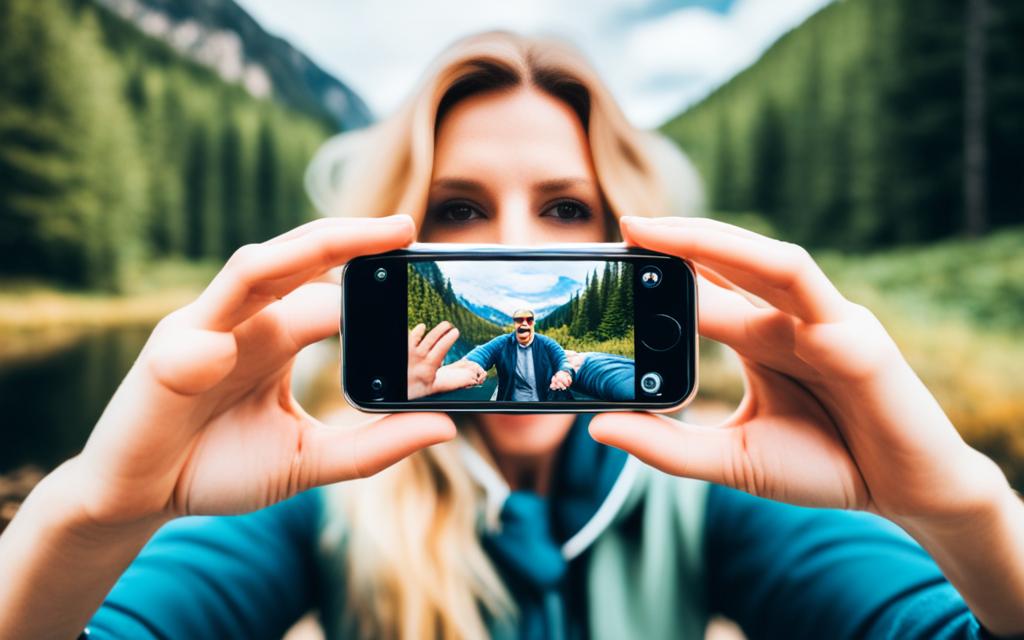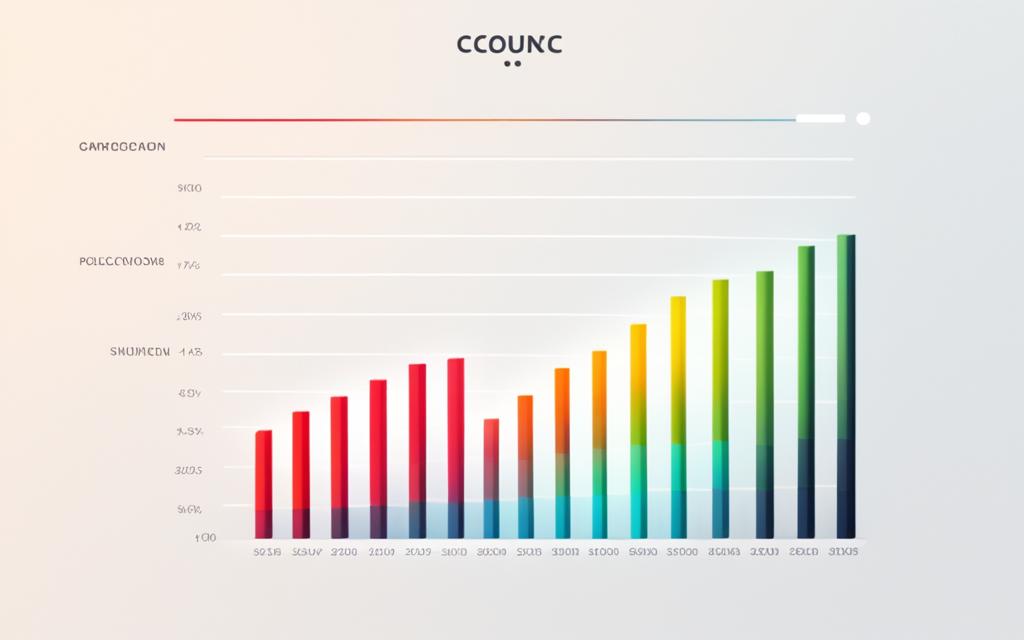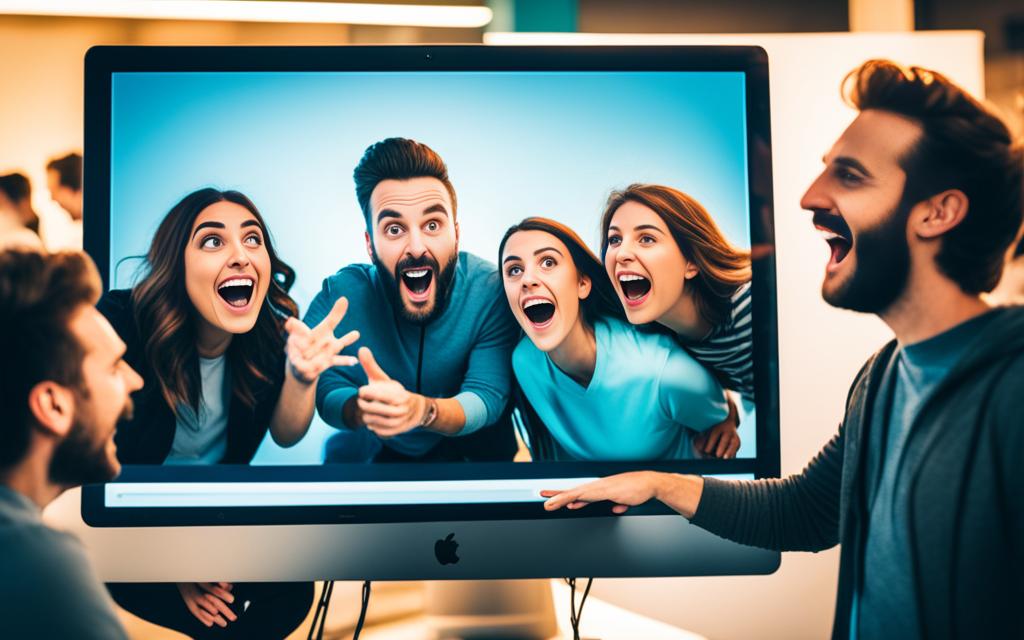In the digital age, sharing videos on social media platforms has become a ubiquitous part of our daily lives. Whether it’s a funny clip, an inspiring message, or a thought-provoking documentary, the impulse to share these visual stories with our online networks is a powerful one. But what drives this behavior, and what are the psychological and social factors that influence our decision to hit that share button?
As a professional copywriting journalist, I’ll delve into the science behind why we share videos on social media. By understanding the emotional triggers, social motivations, and algorithmic forces at play, you’ll gain valuable insights into navigating the ever-evolving world of video sharing and content virality.
Key Takeaways
- The psychological reasons behind why we share videos on social media, including emotional triggers and social connections.
- The role of humor, relatability, and self-expression in driving video sharing behaviors.
- The influence of social proof, validation, and influencer marketing on our video sharing decisions.
- How algorithms on social media platforms encourage and amplify viral video content.
- Analyzing case studies of widely shared videos to understand the elements of a successful viral strategy.
The Psychological Reasons for Sharing
Sharing videos on social media goes beyond merely entertaining or informing your friends and followers. It’s often driven by deeper psychological factors that tap into our innate desire for social connection, self-expression, and identity formation. Understanding these underlying motivations can provide valuable insights into the power of viral content and how brands can leverage it effectively.
Emotional Triggers and Social Connections
When we encounter a video that evokes a strong emotional response, whether it’s laughter, inspiration, or nostalgia, we’re more likely to share it with our social network. This is because sharing these emotionally charged moments helps us bond with others and foster a sense of community. By curating and sharing content that resonates with our personal experiences and values, we’re able to express our social connections and strengthen our relationships.
Self-Expression and Identity Formation
Sharing videos on social media is also a form of self-expression and a means of identity formation. The content we choose to share reflects our interests, beliefs, and the image we want to present to the world. By carefully selecting and sharing videos, we’re able to cultivate our online persona and showcase aspects of our identity that we want others to see.
This process of self-expression and identity formation is particularly prevalent among younger generations, who may use social media as a platform to explore and define their sense of self. Sharing videos that align with their values, interests, and aspirations can be a powerful way for them to communicate who they are and how they want to be perceived by their peers.
“Sharing is a fundamental human behavior that allows us to connect with others, express ourselves, and cultivate our identity. Understanding the psychological motivations behind why we share videos on social media is key to unlocking the power of viral content.”
The Role of Humor and Relatability
When it comes to sharing videos on social media, the power of humor and relatability cannot be overstated. Videos that tap into universal human experiences and emotions, whether through humor or relatability, tend to have a much higher chance of striking a chord with viewers and being widely shared.
Humor is a powerful tool for cutting through the noise and capturing the attention of social media users. Funny videos that make people laugh are more likely to be remembered, engaged with, and shared. Viral video content often features clever, witty, or even absurdist humor that resonates with a broad audience.
But humor is not the only factor that drives video sharing. Relatability is equally important. Videos that showcase relatable, everyday experiences or emotions can foster a sense of connection and understanding among viewers. When people see themselves or their lives reflected in the content they consume, they’re more inclined to share it with their social networks.
By tapping into both humor and relatability, video creators can increase the chances of their content going viral. The combination of laughter and resonance can create a powerful emotional response that compels viewers to engage, comment, and share.
“Humor and relatability are the secret ingredients that can transform a good video into a viral sensation. When you can make people laugh and feel seen, you’ve struck social media gold.”
Ultimately, the key to creating viral video content lies in understanding the psychology of sharing and tapping into the universal human desires for amusement and connection. By embracing the power of humor and relatability, video creators can craft content that resonates with audiences and spreads like wildfire across social media platforms.
Why We Share Videos: Social Proof and Influence
When it comes to sharing videos on social media, the power of social proof and influence plays a significant role. The concept of social proof suggests that people are more likely to engage with and share content when they see others doing the same. This social validation can create a cascading effect, where the more people share a video, the more others feel compelled to do the same.
In the realm of social media, influencer marketing has become a powerful tool for leveraging word-of-mouth recommendations. Influencers, individuals with a significant following and credibility within their niche, can sway their audience’s opinions and behaviors. When an influencer shares or endorses a video, their followers are more likely to engage with and share that content, amplifying its reach and impact.
The Power of Social Validation
Humans are inherently social creatures, and we often look to others for cues on how to behave and what to consume. When we see our peers, friends, or respected figures sharing a video, it creates a sense of social proof that the content is valuable, entertaining, or worth sharing. This social validation can trigger a desire to be part of the conversation, leading to a surge of shares and engagement.
“Social proof is one of the most powerful forces that influence human behavior. When we’re unsure about a decision, we look to others to guide us.” – Robert Cialdini, author of “Influence: The Psychology of Persuasion”
Influencer Marketing and Word-of-Mouth
In the digital age, influencer marketing has become a go-to strategy for brands and content creators. Influencers, with their loyal following and expert status, can lend credibility and authenticity to a video, making it more likely to be shared and discussed. When an influencer endorses or shares a video, their followers are more inclined to trust the content and pass it along, generating a powerful word-of-mouth effect.
By understanding the role of social proof, social validation, influencer marketing, and word-of-mouth in video sharing, content creators and brands can develop more effective strategies to harness the power of social media and drive viral success.
How Algorithms Encourage Sharing
Social media platforms utilize sophisticated algorithms to determine the content that is displayed to users. These algorithms are engineered to prioritize and amplify highly engaging and shareable content, as this is the key to driving user interaction and platform growth. By understanding the science behind these algorithms, content creators can optimize their videos to increase the likelihood of them going viral and reaching a wider audience.
The Science Behind Viral Content
At the heart of social media algorithms lies a focus on engagement metrics. Platforms analyze factors such as likes, shares, comments, and view time to identify content that resonates with users and has the potential to spread rapidly. Videos that trigger strong emotional reactions, tap into universal human experiences, or align with current trends and cultural discussions are more likely to be surfaced and recommended to a broader audience.
The algorithms also prioritize content that encourages users to interact and share. Videos that are relatable, humorous, or provide a sense of social proof or validation are more likely to be shared, as users seek to connect with their social networks and express their personal identities.
| Key Factors for Viral Video Content | Explanation |
|---|---|
| Emotional Resonance | Videos that evoke strong emotions, such as awe, laughter, or inspiration, are more likely to be shared. |
| Social Relevance | Content that taps into current trends, cultural discussions, or shared experiences is more likely to resonate and spread. |
| Shareability | Videos that are relatable, entertaining, or provide a sense of social validation encourage users to share with their networks. |
| Engagement Metrics | Algorithms analyze factors like likes, comments, and view time to identify content that is capturing user attention and interest. |
By understanding these key factors and optimizing their Social Media Algorithms and Viral Video Content, content creators can increase their chances of producing Engagement Metrics-driven, shareable content that resonates with their target audience and gains traction on social media platforms.
Case Studies of Widely Shared Videos
Examining real-world examples of widely shared videos can provide valuable insights into the key elements that contribute to viral success. By analyzing both the wins and losses in the world of viral video content, you can develop a more nuanced understanding of the factors that influence shareability and engagement on social media.
Analyzing Viral Successes and Failures
To understand the science behind Viral Video Case Studies, let’s explore some examples of Successful Viral Videos and Failed Viral Videos. These case studies can offer a deeper dive into the psychology of sharing and the various factors that can make or break a video’s potential to reach viral status.
- The Viral Success of the “Runaway Flower Girl” Video
- This heartwarming video of a flower girl running down the aisle at a wedding captured the hearts of millions and became a viral sensation.
- The video’s success can be attributed to its emotional appeal, relatable human moments, and the universal joy it evoked in viewers.
- The Failure of the “Pepsi Protest” Video
- The “Pepsi Protest” video, featuring a model defusing a tense confrontation with police using a can of Pepsi, faced widespread backlash and criticism.
- The video’s attempt to capitalize on social issues in a tone-deaf manner ultimately resulted in a failed attempt at Viral Video Case Studies.
| Viral Video Case Studies | Key Factors for Success | Key Factors for Failure |
|---|---|---|
| Runaway Flower Girl | Emotional appeal, relatable human moments, universal joy | N/A |
| Pepsi Protest | N/A | Tone-deaf approach, lack of authentic connection with social issues |
These case studies highlight the nuances and complexities involved in creating Successful Viral Videos. By understanding the factors that contribute to both viral successes and failures, you can develop a more informed strategy for creating and sharing video content that resonates with your audience.
“Viral videos are a complex interplay of emotional triggers, social connections, and algorithmic factors. By studying both the wins and losses, we can uncover the true science behind shareable content.”
The Impact of Virality on Brands
When it comes to the world of social media, the power of viral videos cannot be overstated. These captivating pieces of content can have a profound impact on brands, both positively and negatively. Understanding the interplay between viral videos and brand reputation, awareness, and engagement is crucial for businesses navigating the dynamic digital landscape.
Successful viral videos can serve as a powerful tool for boosting brand awareness. As these videos spread like wildfire across social platforms, they expose a brand’s name, products, or services to a vast audience, often reaching far beyond the brand’s existing customer base. This increased visibility can lead to heightened brand recognition and recall, ultimately driving potential customers to explore and engage with the brand.
Furthermore, viral videos that evoke positive emotions or resonate with viewers on a deeper level can significantly enhance a brand’s reputation. When a brand is associated with content that sparks joy, laughter, or heartfelt connections, it can cultivate a more favorable perception among consumers. This, in turn, can foster greater brand loyalty and trust, which are vital for long-term success.
However, the power of virality can also work against brands. Poorly executed or mishandled viral videos can quickly become a liability, damaging a brand’s reputation and undermining consumer trust. A viral video that is perceived as insensitive, controversial, or out of touch with the brand’s values can swiftly erode the hard-earned brand equity that a company has built over time.
| Impact of Viral Videos on Brands | Positive Impact | Negative Impact |
|---|---|---|
| Brand Awareness | ✓ | – |
| Brand Reputation | ✓ | ✓ |
| Brand Engagement | ✓ | ✓ |
| Brand Trust | ✓ | ✓ |
Ultimately, the impact of viral videos on brands is a complex and multifaceted phenomenon. While the potential rewards of a successful viral video campaign are substantial, the risks of a misstep can be equally significant. Brands must navigate this dynamic landscape with a deep understanding of their target audience, a strong grasp of social media trends, and a commitment to creating content that aligns with their core values and resonates authentically with consumers.
“The power of viral content is undeniable, but it must be wielded with care and precision. Brands that can harness the magic of virality while preserving their reputation and values will be the true winners in the digital age.”
Conclusion
In conclusion, the science behind why we share videos on social media is a complex interplay of psychological, social, and algorithmic factors. By understanding these key drivers, strategies to encourage sharing can be developed by content creators and brands to create and promote more engaging and shareable video content.
As social media platforms continue to evolve, the future directions in social media sharing will likely be shaped by emerging trends and cultural differences in how people engage with and spread content online. Exploring these future directions can help marketers and communicators stay ahead of the curve and adapt their strategies accordingly.
Ultimately, the power of video sharing lies in its ability to foster social connections, spark conversations, and influence the way we consume and interact with content. By staying attuned to the ever-changing landscape of social media and the underlying psychology of sharing, you can develop more effective approaches to leveraging the power of viral video content.






